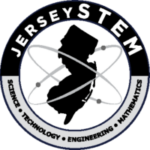Future Chemists in the Making: JerseySTEM at NYSCC Suppliers’ Day 2025
🚀“From classroom to cosmetics lab: JerseySTEM’s future chemists get hands-on with real formulations at NYSCC Suppliers’ Day 2025.”🚀
Future Chemists in the Making: JerseySTEM at NYSCC Suppliers’ Day 2025
Written by JerseySTEM Marketing Team · June 2025
It was a morning full of anticipation as twenty-four middle school girls boarded a bus bound for the Jacob Javits Center in New York City. These young students—hailing from Robert Treat Academy, Lafayette School, Bridgewater-Raritan and beyond—weren’t headed for an ordinary field trip. They were preparing to step into the heart of the cosmetic science industry at the NYSCC Suppliers’ Day 2025, guided by their mentors at JerseySTEM.
The buzz of the exhibition floor was a far cry from their after-school classrooms, where they’d been learning the foundations of chemistry. This visit promised something more: a window into how the products they use every day—lip balms, lotions, serums—are developed and brought to market by scientists, many of whom looked just like them.
Their day began with a deep dive into formulation science at the Croda booth. All three student groups were welcomed for hour-long sessions led by Rhythm Sharma and her team. The girls were handed real lab evaluation sheets and asked to compare three different lip balm prototypes—each subtly different in texture and performance. As they discussed the science behind “oily,” “sticky,” and “smooth,” the girls made real-time connections to what they had learned in their own chemistry experiments at JerseySTEM. It was hands-on, eye-opening, and for many, the highlight of the day.
Afterward, the group was treated to lunch by the incoming 2026 chair of NYSCC Anushka Nadkarni. Set apart from the show floor, this quiet moment allowed the girls to hear career stories and ask questions about what it takes to succeed in science. A professional photographer captured the group mid-lunch, preserving a memory of inspiration and connection.
The afternoon offered more moments of wonder. At the BASF booth, the girls explored emulsions and color dispersion, guided by chemist Tara Mercer. A quick stop at the Future Chemist Workshop, organized by Tom Drwiega, gave them a glimpse into college-level chemistry as they interacted with university students mixing and measuring active ingredients.
One group also visited Paradigm Science, where CEO Michael Manning took time to speak with them. Paradigm had helped sponsor their trip to NYSCC, and the conversation felt like a full-circle moment of support and encouragement.
But not everything was on the schedule. Walking through the aisles, the students made spontaneous stops that proved equally powerful. At the Ingredion booth, a former JerseySTEM instructor welcomed them with open arms. At High on Love, a founder the girls recognized from social media invited them to explore her indie beauty brand, sparking conversations about entrepreneurship, chemistry, and creativity. Other companies—Hallstar, Wacker, Alzo, and Deveraux Specialties—offered quick chats, product demos, and even fun giveaways.
These moments, both planned and unexpected, brought science to life. Students who once viewed chemistry as textbook equations now saw its role in innovation and beauty. They met chemists, engineers, and entrepreneurs who spoke to them not just as students, but as future professionals.
This trip wasn’t just a one-day excursion. It marked a step forward. The JerseySTEM team is already working on making NYSCC Suppliers’ Day a permanent part of their spring programming. They hope to grow sponsorships, deepen industry partnerships, and expand hands-on curriculum so that even more girls can discover the joy and possibility in science.
To the generous hosts—Croda, NYSCC, BASF, Paradigm Science, Seppic, Symrise, Zschimmer & Schwarz, Inolex, Ardi Gift/Jood—and to every booth that paused their busy day to greet a young mind with encouragement: thank you. You made a difference.
If you’re interested in supporting our mission or becoming a future sponsor, email Dennis Boyd at [email protected] or visit our Corporate Sponsor Opportunities page.
#JerseySTEM #FutureChemists #GirlsInSTEM #CosmeticScience #NYSCCSuppliersDay









